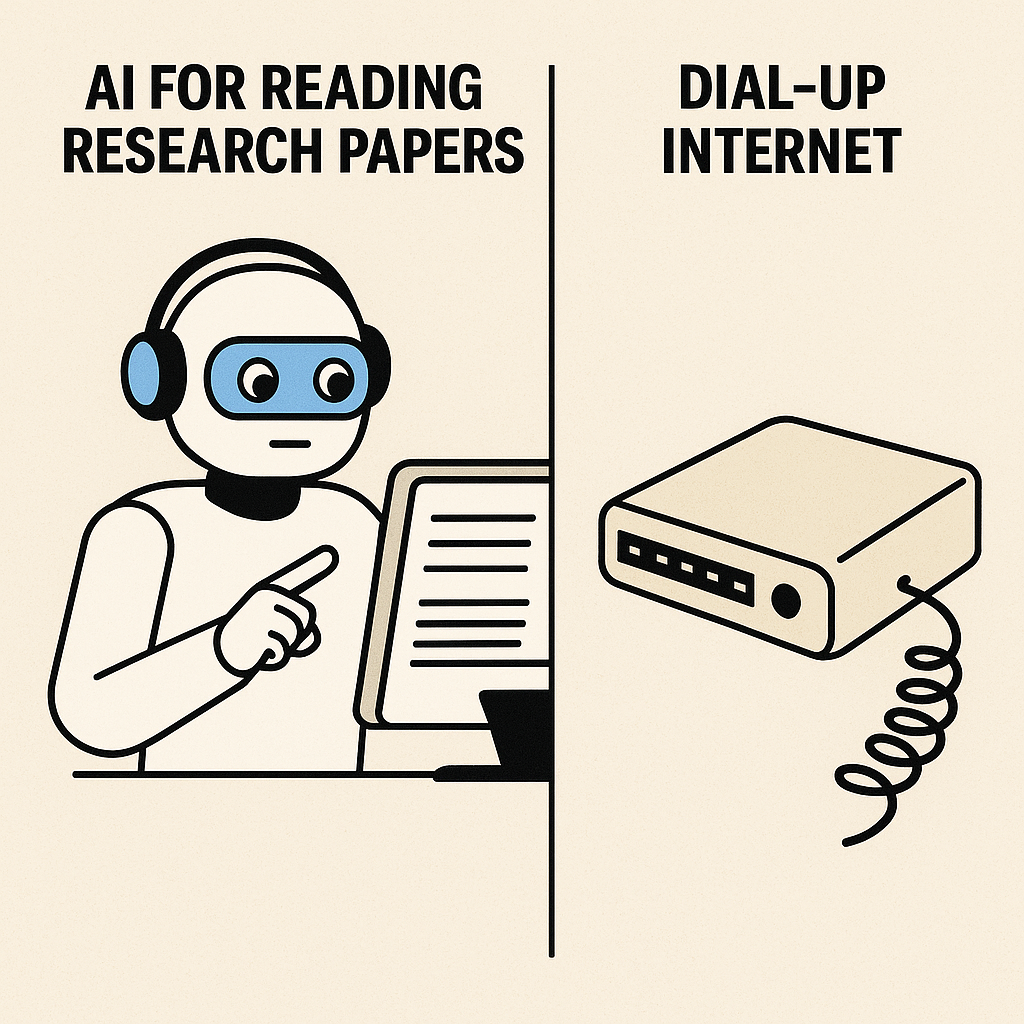
If you’ve ever tried to manually dig through dozens of dense, jargon-filled academic PDFs, you already know the feeling: exhaustion, eye strain, and the creeping suspicion that there has to be a better way. The truth? There is. And increasingly, not using AI to help with research feels like living in the past—like browsing the web on dial-up when everyone else is on fiber.
The emergence of AI for reading research papers has changed the game completely. Tools like SciSummary and others are redefining what it means to engage with academic literature. They're not just helpful—they're fast, smart, and becoming essential.
Why AI for Research Papers Has Become the New Norm
In 2025, the pace of academic publishing has reached a level that no human can reasonably keep up with. Fields like biology, AI, medicine, and climate science are exploding with new findings daily. It’s no longer realistic for researchers to read every relevant paper from start to finish.
That’s where AI for research papers comes in. AI models trained on academic language can parse dense studies and generate structured summaries in seconds. They highlight hypotheses, methods, results, and limitations—without requiring the reader to decode every word.
What once took an hour now takes a minute. And that’s not an exaggeration.
The Rise of the AI Paper Reader
Today’s top tools use AI paper readers to scan PDFs, extract relevant data, and present concise overviews. These summaries aren’t generic—they’re tuned for scientific understanding. You can ask follow-up questions, check definitions, or even compare papers with each other.
For overworked grad students and researchers, this is a lifeline. For everyone else, it’s a wake-up call. Falling behind on the literature now has less to do with time and more to do with tech adoption.
Simply put, the best AI for research papers helps you stay current, faster than humanly possible.
Literature Reviews in the AI Era
One of the biggest beneficiaries of this technology is the dreaded literature review. Whether for a dissertation or a journal submission, reviews have always required a massive time investment. That’s changing fast.
Academic literature review AI tools allow users to collect, compare, and analyze dozens of papers in hours—not weeks. They help organize findings, spot research gaps, and flag inconsistent data. This isn’t just time-saving—it’s reshaping how early-career researchers approach scholarship.
If you're still manually organizing citations and reading 30 PDFs one by one, you're not just working harder. You're working slower than you need to.
A Shift in Research Culture
Some skeptics argue that relying on AI for academic research makes students lazy or reduces critical thinking. But that criticism misses the point. The goal isn’t to skip understanding—it’s to reach understanding faster. AI is a tool that accelerates the parts of research that used to bog people down.
And in fields where staying updated is vital—like medicine, AI development, or policy research—the cost of not using AI can be more than just inefficiency. It can be irrelevant.
That’s why the best scholars are leaning into the shift. They're using the best AI academic research tools to handle the bulk of reading and filtering, then spending their time on synthesis, critique, and innovation.
The Bottom Line
Reading research papers the old-fashioned way isn’t wrong—but it is outdated. Like using dial-up in a broadband world, it slows you down while the rest of academia speeds ahead.
If you’re serious about keeping up with your field, producing better work, and avoiding burnout, it’s time to rethink your toolkit. Use an AI paper reader. Try an AI chat for scientific PDFs. Lean on AI for academic research to do the heavy lifting—so you can focus on what actually matters: thinking critically, making connections, and moving science forward.